Ankle
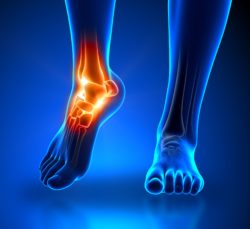 Arthritis of the ankle affects between 1-4% of the global population, and is frequently associated with a previous injury – such as an ankle fracture or a severe ankle sprain. Patients are typically diagnosed with ankle arthritis at a much younger age than hip or knee arthritis. Our research aims to improve treatment options available to patients with arthritis, and develop models to predict degeneration following injury so that we can identify opportunities for interventions which will prevent or delay the onset of arthritis.
Arthritis of the ankle affects between 1-4% of the global population, and is frequently associated with a previous injury – such as an ankle fracture or a severe ankle sprain. Patients are typically diagnosed with ankle arthritis at a much younger age than hip or knee arthritis. Our research aims to improve treatment options available to patients with arthritis, and develop models to predict degeneration following injury so that we can identify opportunities for interventions which will prevent or delay the onset of arthritis.
Total ankle replacement and ankle fusion
Ankle replacement was first introduced in the 1970s, but remains much less clinically successful than hip or knee replacement, with more than 10% of replacements failing in under 10 years. Ankle fusion is currently the gold standard for treatment, but limits the range of motion for the foot and ankle.
We have been working with clinicians across the country to understand the failure mechanisms associated with total ankle replacement, including analysing the explanted devices and the medical imaging associated with each case.
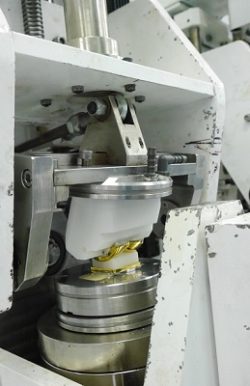 We are developing novel experimental methods to pre-clinically assess the wear performance of total ankle replacement under a range of biomechanical and implantation conditions.
We are developing novel experimental methods to pre-clinically assess the wear performance of total ankle replacement under a range of biomechanical and implantation conditions.
Computational models of total ankle replacement are being used to investigate the influence of implant geometry and positioning on the stress within the 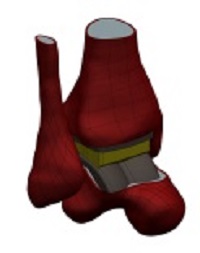 bone surrounding the implant.
bone surrounding the implant.
If you'd like to hear more, please contact Dr Claire Brockett
Tissue sparing interventions for the cartilage
The ankle is the most commonly injured joint within the lower body. Defects in the ankle cartilage and bone have been associated with ankle sprains and traumatic injury, as well as spontaneously occurring. These defects can lead to osteoarthritis of the joint. Joint replacement and fusion is often performed for patients where the whole joint is not affected.
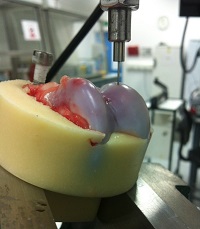 We are currently developing experimental models to assess the influence of these defects on the tribology of the natural joint, and assessing retrieved tissue from the ankle joint at fusion and replacement to explore whether tissue sparing interventions for the ankle could be a viable treatment option.
We are currently developing experimental models to assess the influence of these defects on the tribology of the natural joint, and assessing retrieved tissue from the ankle joint at fusion and replacement to explore whether tissue sparing interventions for the ankle could be a viable treatment option.
If you'd like to hear more, please contact Dr Claire Brockett
Variations in the patient population – foot morphology
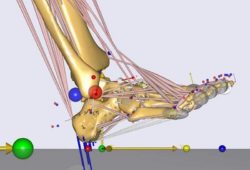 Patient variation in foot morphology and ankle geometry can influence the biomechanics of the foot and ankle, and the stability of the ankle joint. We are developing multi-body dynamic computational models, alongside statistical shape modelling of the foot using medical imaging, to understand the influence of patient variation on the function of the foot and ankle.
Patient variation in foot morphology and ankle geometry can influence the biomechanics of the foot and ankle, and the stability of the ankle joint. We are developing multi-body dynamic computational models, alongside statistical shape modelling of the foot using medical imaging, to understand the influence of patient variation on the function of the foot and ankle.
If you'd like to hear more, please contact Dr Claire Brockett
Treatments for ligament damage
Ankle sprain is one of the most common musculoskeletal injuries, with more than 5600 occurring every day in the UK alone. Whilst most people think these are a relatively innocuous problem, over half the patients suffering a severe ankle sprain will go on to experience long-term ankle instability. The sprain event itself can also cause damage to the bone and cartilage in the joint, leading to osteochondral defects of the ankle.
We are developing experimental sprain simulation models to assess the mechanism of the sprain – examining ligament and joint surface damage. Working with external partners, we are also developing experimental methods to assess the performance of ligament repair materials.
If you'd like to hear more, please contact Dr Claire Brockett
